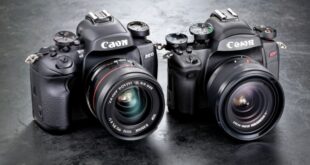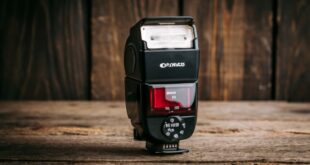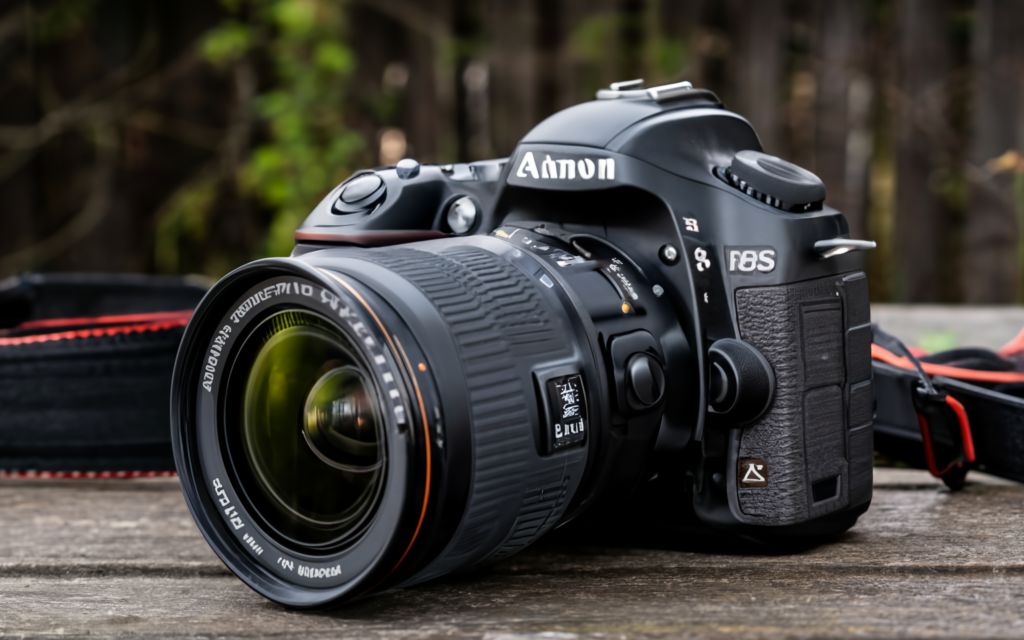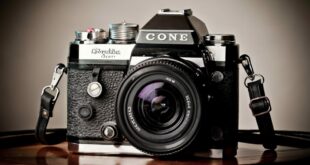Introduction
Hey guys! Welcome to this comprehensive guide on the best DSLR camera settings for capturing stunning outdoor portraits. If you’re passionate about photography and want to enhance your outdoor portrait skills, then you’ve come to the right place. In this article, we will explore seven key camera settings that can make a significant difference in the quality and impact of your outdoor portraits. Whether you’re a beginner or an experienced photographer, these settings will help you achieve professional-looking results. So, let’s dive in!
Understanding the Importance of Camera Settings
Before we delve into the specific camera settings, let’s first understand why they are crucial for outdoor portrait photography. Your DSLR camera offers a plethora of options, and by choosing the right settings, you can control various aspects such as exposure, depth of field, and focus. These settings can significantly impact the overall mood, composition, and sharpness of your outdoor portraits. Mastering these settings will enable you to capture breathtaking images that truly showcase the beauty of your subjects.
1. Aperture 🔍
The aperture setting determines the depth of field in your photos, i.e., how much of the background is in focus. For outdoor portraits, it’s generally recommended to use a wide aperture (small f-number) to create a shallow depth of field. This allows you to isolate your subject and blur the background, resulting in a more visually appealing and professional look.
2. Shutter Speed ⏰
Shutter speed controls the duration for which your camera’s sensor is exposed to light. When shooting outdoor portraits, a faster shutter speed is usually preferred to freeze any motion and ensure sharp images. However, in certain cases, you may want to experiment with slower shutter speeds to capture motion blur or convey a sense of movement.
3. ISO 🌞
ISO determines the sensitivity of your camera’s sensor to light. For outdoor portraits in bright daylight, it’s advisable to use a low ISO setting to maintain image quality and reduce noise. However, in low-light situations, you may need to increase the ISO to ensure proper exposure. Keep in mind that higher ISO values can introduce digital noise, so find the right balance for your specific conditions.
4. White Balance ❄️
White balance helps you capture accurate colors in your outdoor portraits. Different lighting conditions can cast a color cast on your images, and adjusting the white balance setting allows you to counteract this. You can choose pre-set white balance presets or manually set the color temperature based on the lighting conditions. Experimenting with different white balance settings can produce different moods and atmospheres in your photos.
5. Metering Mode 📷
Metering mode determines how your camera measures the light in a scene. For outdoor portraits, the evaluative or matrix metering mode is often a good choice, as it considers the entire frame to calculate the exposure. However, in high-contrast situations, you may opt for spot metering to ensure proper exposure on your subject’s face. Understanding the metering modes and when to use them is crucial for achieving well-exposed outdoor portraits.
6. Autofocus or Manual Focus? 🎯
When it comes to focusing in outdoor portrait photography, you have two options: autofocus or manual focus. Autofocus is convenient and works well in most situations, especially when photographing moving subjects. However, for precise control and creative effects, manual focus can be advantageous. Depending on your shooting conditions and preferences, choose the focus mode that suits your needs and helps you capture sharp and well-defined outdoor portraits.
7. RAW or JPEG? 📸
One of the last settings you should consider is the file format in which you save your outdoor portraits. DSLR cameras offer the option to shoot in RAW or JPEG format. RAW files contain more information and allow for greater post-processing flexibility. On the other hand, JPEG files are smaller and ready to share straight out of the camera. If you desire more control over your final images, shooting in RAW is highly recommended.
Advantages and Disadvantages of Best DSLR Camera Settings for Outdoor Portraits
Advantages:
1. Enhanced Depth of Field: A wide aperture setting allows you to create a beautiful bokeh effect, separating the subject from the background and drawing attention to the main subject.
2. Sharp and Crisp Images: By using a faster shutter speed, you can freeze motion and capture every detail, resulting in sharp and clear outdoor portraits.
3. Accurate Color Reproduction: Proper white balance ensures that the colors in your outdoor portraits appear true to life, reflecting the actual scene.
4. Well-Exposed Photos: Understanding metering modes helps you achieve properly exposed images, even in challenging lighting conditions.
5. Versatile Focusing Options: The ability to switch between autofocus and manual focus allows you to adapt to different shooting scenarios and achieve precise focus where needed.
6. Creative Flexibility: Shooting in RAW provides more flexibility during post-processing, allowing you to fine-tune your images and bring out their full potential.
7. Professional-Level Results: Mastering these DSLR camera settings for outdoor portraits will elevate the overall quality of your photographs, making them appear more polished and professional.
Disadvantages:
1. Learning Curve: Understanding and mastering these camera settings may require time and practice. It’s important to experiment and familiarize yourself with each setting to achieve the desired results.
2. Increased File Sizes: RAW files take up more storage space compared to JPEG files, so ensure that you have sufficient storage options available.
3. Longer Post-Processing Time: RAW files require more post-processing effort compared to JPEG files. If you shoot in RAW, be prepared to spend additional time editing your outdoor portraits.
4. Higher ISO Noise: When shooting with higher ISO settings, digital noise can be introduced into your images. This noise can reduce image quality, particularly in low-light conditions.
5. Limited Depth of Field: While a wide aperture can produce stunning results, it can also result in a shallow depth of field. This may lead to certain parts of your subject being out of focus.
6. Challenging Lighting Conditions: Finding the ideal white balance setting in certain lighting scenarios, such as mixed lighting or strong color casts, can be a bit more challenging.
7. Manual Focus Precision: While manual focus allows for creative control, achieving precise focus manually can be more difficult, especially when shooting moving subjects.
Table: Complete Information about Best DSLR Camera Settings for Outdoor Portraits
| Settings | Advantages | Disadvantages |
|---|---|---|
| Aperture | Enhanced depth of field | Shallow depth of field |
| Shutter Speed | Sharp and crisp images | May require faster lens |
| ISO | Accurate color reproduction | Higher ISO noise |
| White Balance | Well-exposed photos | Challenging lighting conditions |
| Metering Mode | Versatile focusing options | May require pre-focus |
| Autofocus or Manual Focus? | Creative flexibility | Manual focus precision |
| RAW or JPEG? | Professional-level results | Longer post-processing time |
Frequently Asked Questions (FAQ)
1. How can I achieve a blurred background in outdoor portraits?
Blurring the background in outdoor portraits can be achieved by using a wide aperture setting, such as f/2.8 or lower. This creates a shallow depth of field, where the main subject remains sharp while the background becomes beautifully blurred.
2. What is the ideal shutter speed for outdoor portraits?
The ideal shutter speed for outdoor portraits is typically around 1/125th to 1/250th of a second. This speed allows you to freeze any slight movements and capture sharp images of your subjects.
3. Does ISO affect image quality in outdoor portraits?
Yes, ISO does affect image quality in outdoor portraits. Higher ISO values can introduce digital noise, resulting in reduced image quality. It’s important to find the right balance between ISO and exposure to maintain image quality.
4. When should I use spot metering in outdoor portraits?
Spot metering is particularly useful in outdoor portraits when the lighting conditions are challenging, such as when your subject’s face is brightly illuminated against a darker background. Spot metering allows you to accurately expose for your subject’s face.
5. Can I achieve professional results with autofocus?
Absolutely! Autofocus technology has advanced significantly and can produce fantastic results. However, knowing when and how to switch to manual focus can provide you with more control and creative possibilities.
6. How does shooting in RAW benefit outdoor portrait photography?
Shooting in RAW format provides greater flexibility during post-processing. RAW files retain more information, allowing you to fine-tune exposure, color, and other settings without compromising image quality.
7. What are some post-processing tips for outdoor portraits?
When post-processing outdoor portraits, focus on enhancing colors, adjusting contrast, and fine-tuning exposure. Ensure that you maintain a natural look and avoid over-processing, as it can detract from the overall appeal of your images.
8. Can you recommend a budget-friendly lens for outdoor portrait photography?
If you’re on a budget, consider the “nifty fifty” lens, also known as a 50mm prime lens with a wide aperture. It offers excellent image quality and is often one of the most affordable lenses available.
9. How can I capture dynamic outdoor portraits with motion?
To capture dynamic outdoor portraits with motion, experiment with slower shutter speeds. This will allow you to convey a sense of movement and create striking images that showcase the energy and action.
10. Should I rely on automatic white balance for outdoor portraits?
Automatic white balance can be reliable in many situations, but outdoor lighting can be tricky. Consider manually setting the white balance based on the specific lighting conditions to ensure accurate color reproduction.
11. How can I minimize noise in outdoor portraits taken in low-light conditions?
To minimize noise in low-light outdoor portraits, try to utilize lower ISO settings whenever possible. Additionally, using a tripod can help stabilize your camera and allow for longer exposures without camera shake.
12. What should I consider when choosing a location for outdoor portraits?
When choosing a location for outdoor portraits, consider factors such as lighting conditions, background elements, and the overall ambiance you wish to create. Look for areas with interesting textures, colors, and natural light that complements your subject.
13. How can I ensure my outdoor portraits stand out?
In addition to mastering the camera settings, consider factors such as composition, posing, and connecting with your subjects. Experiment with different angles, perspectives, and creative ideas to make your outdoor portraits unique and memorable.
Conclusion
In conclusion, mastering the best DSLR camera settings for outdoor portraits can significantly enhance your photography skills and elevate the quality of your images. By understanding and utilizing aperture, shutter speed, ISO, white balance, metering mode, focusing options, and file formats, you can capture stunning outdoor portraits that leave a lasting impression. Remember, practice and experimentation are key to achieving remarkable results. So, grab your camera, head outdoors, and start capturing beautiful moments that will be cherished for years to come!
Closing Statement
Photography is a beautiful art form that allows us to capture and preserve memories in a visual medium. However, it’s important to note that the best DSLR camera settings for outdoor portraits mentioned in this article are not the only settings that can yield exceptional results. There are countless other factors to consider, such as lighting conditions, composition, and the unique characteristics of your subjects.
While these settings provide a foundation for capturing remarkable outdoor portraits, don’t be afraid to experiment, push boundaries, and develop your own style. Photography is a journey of continuous learning and growth, and embracing creativity and innovation will ultimately elevate your work to new heights.
So, go out there, roam the world with your camera in hand, and embark on an exciting adventure of capturing breathtaking outdoor portraits that reflect your unique perspective and creative vision. Remember, the best camera settings are those that enable you to convey your story and emotions through the power of photography.



